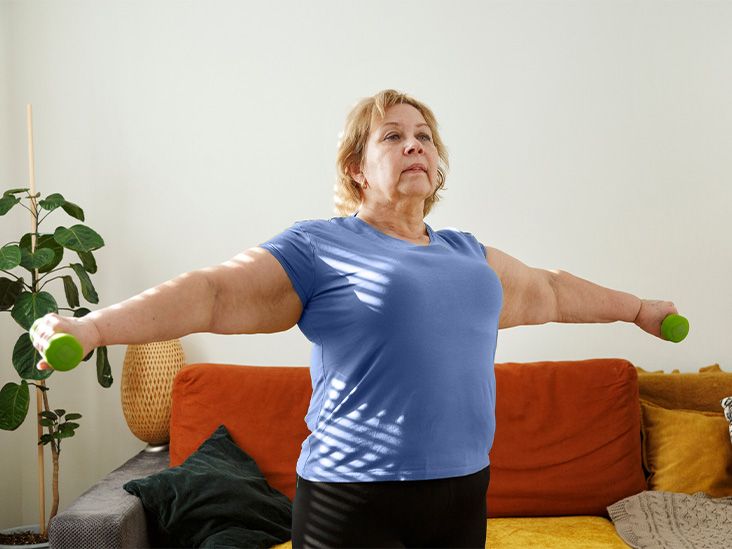Race and ethnicity influence a person’s skin tone, which affects the appearance of skin cancer. In lighter skin tones, skin cancer may be red, brown, or black. In deeper skin tones, it may be a similar color to the surrounding skin or darker.
Skin cancer is the number one type of cancer in the US and around the world.
White people are more likely to develop many types of skin cancer than any other racial group. This is because they have less melanin in their skin, which gives skin its color. Melanin provides some protection against UV light, which is a leading cause of skin cancer.
However, people of any race or ethnicity can develop skin cancer, and UV exposure may not be the only risk factor at play. It is likely that numerous factors influence a person’s risk for developing skin cancer.
In this article, learn more about the differences in skin cancer by race and ethnicity, including survival rates in the United States.
Warning
Contains Sensitive Content
The relationship between race, ethnicity, and skin cancer is complex. One of the main differences in its presentation occurs due to variations in skin color.
Skin tone has a significant influence on how skin cancer looks. People with lighter skin tones may develop growths different in color to the surrounding skin, making them more noticeable. However, in those with darker skin, cancerous growths may be skin-colored and therefore less noticeable.
This is true both across racial groups and within them. For example, a Black person with lighter skin may notice a dark-colored growth more easily than a Black person with highly pigmented skin.
Another factor for people to consider is a potential difference in skin cancer’s location. In skin of color, melanoma is
- palms of the hands
- soles of the feet
- toenails or fingernails
- inside the mouth
- genitals
If a new growth or rash appears, people can use the ABCDE acronym to check for any cancerous signs. The acronym
- Asymmetry: Look for growths that, if they were cut in half, one half wouldn’t look like the other.
- Border: Check for irregular borders.
- Color: Look for uneven pigmentation, a growth with more than three colors, and concerning colors such as red, white, blue, and black.
- Diameter: Check for large growths that are bigger than the diameter of an eraser (about 6 mm).
- Evolving: A growth that changes over time may be cancerous.
People should also look for:
- raised bumps or nodules
- open sores that do not heal or that come back
- wart-like growths
- scaly patches
- black, pearly, and translucent skin growths
- moles that bleed or grow in size
A person should speak with a doctor as soon as possible about any growths with these characteristics.
White people appear to have a generally higher vulnerability to skin cancer than other groups. This is probably due to the lack of melanin in lighter skin, making it easier for UV light to cause damage.
By contrast, deeper skin tones with more melanin filters at least
However, a
Here are the different rates for specific types of cancer:
Non-melanoma skin cancer
Non-melanoma skin cancer includes squamous cell carcinoma (SCC) and basal cell carcinoma (BCC).
SCC is the most common skin cancer among African American and Asian Indian people and the second most common among Hispanic, Chinese, and Japanese Americans.
BCC is highly prevalent among white people, comprising 65–75% of skin cancers among this group. In lighter-skinned individuals, it may appear pink or pearly.
It makes up 20–30% of skin cancers among People of Color but is more common among Latinx, Chinese, and Japanese people than Black people.
BCC is closely correlated with UV exposure and occurs more often in People of Color who live in sunny climates.
Melanoma
Melanoma is fairly uncommon, accounting for just
Melanoma rates have risen over the last two decades for all races, according to the
Melanoma is about 20 times more common in white people than in Black people. The
- 1 in 38 for white people
- 1 in 167 for Hispanic people
- 1 in 1,000 for Black people
Overall, the average annual odds of dying from melanoma from
- 3.9 per 100,000 for non-Hispanic white males
- 1.7 per 100,000 for non-Hispanic white females
- 0.9 per 100,000 for Hispanic males
- 0.5 per 100,000 for Hispanic females
- 0.3 per 100,000 for all Black people
- 1.2 per 100,000 for male American Indian/Alaska natives
- 0.6 per 100,000 for female American Indian/Alaska natives
- 0.4 per 100,000 for Asian/Pacific Islander males
- 0.3 per 100,000 for Asian/Pacific Islander females
Survival rates are a way of measuring how long a person lives following their initial cancer diagnosis. Factors that can influence survival include cancer stage and location, cancer type, sex, age, and a person’s general health status.
In the U.S., systemic racism also means that race and ethnicity
The following sections look at differences in survival rates for BCC, SCC, and melanoma.
Non-melanoma skin cancers
Over time, mortality rates for BCC and SCC have improved, making deaths from these types of skin cancer uncommon.
However, previous studies have shown that this improvement affects Black people less consistently than white people. Mortality rates from SCC are disproportionately high in People of Color, with estimates ranging from 18–29%.
Melanoma
Although it is an uncommon type of skin cancer, melanoma causes
The group with the highest survival rate was non-Hispanic white people, followed by Hispanic people and other ethnicities.
More recently, a 2021 study noted a 25% difference in absolute survival between Black and white populations.
The differences in skin cancer symptoms, incidence rates, and survival rates by race are due to several factors.
Differing symptoms
Having a lighter skin tone can make it easier to see skin cancer lesions, which may mean a person recognizes it sooner. People with darker skin may not recognize a growth as being potentially cancerous until it has grown larger.
Additionally, a lack of representation of darker skin tones in medical textbooks may mean doctors have less knowledge on the appearance of skin cancer in People of Color. A 2018 textbook review found that none had images of six common skin cancers in skin of color.
Another
Delay in diagnosis and treatment
Black people are more likely to receive a skin cancer diagnosis at a later stage of the disease than white people.
Researchers note several reasons for this, including:
- more difficulty accessing healthcare
- lower rates of health insurance coverage
- higher rates of skin cancer in non-sun-exposed areas, so it is less visible
- people not recognizing skin cancer symptoms
Language barriers
In the U.S., Hispanic people have seen a 20% increase in melanoma over the past two decades. Researchers are not sure why this is but speculate that language barriers may mean that public health information about skin cancer and sun protection is not as accessible to people with English as a second language.
Behavior
Exposure to UV light is a
People with lighter skin may be more likely to engage in this behavior to develop a tan. However, other behaviors may also affect the risk for Hispanic and Black people.
For example, a 2019 study notes that the increase in melanoma among Hispanic people in the U.S. may be due to people adopting American culture, which may result in people taking fewer precautions against sun damage or spending more time outside.
It is also possible that misconceptions about skin tone and its ability to protect against the sun lead people to assume they have a very low risk of skin cancer or do not need to wear sunscreen.
Skin cancer is easier to treat in its early stages. People of all skin tones should regularly check their skin for any new or unusual growths. The American Academy of Dermatology recommends doing this once a month.
People should consult a doctor about any changes. An annual skin exam with a dermatologist can also help.
People of Color may prefer to speak with a dermatologist with experience treating diverse skin types. A person can find a doctor with this knowledge and experience by searching the Skin of Color Society directory.
Skin cancer looks different due to a person’s skin tone. It may appear red, black, or brown in people with lighter skin. In those with darker skin, the main feature may be a difference in texture rather than color. People of Color are also more likely to develop melanoma in places such as the palms, soles, and nails.
This may affect how quickly doctors can diagnose skin cancer. Other factors that affect skin cancer diagnosis and treatment include misconceptions about skin cancer risk in skin of color and health inequity. This makes it more difficult for some groups to access health insurance and timely cancer treatment, significantly affecting survival rates.
Overall, skin cancers are much more common among white people, but it is important for everyone to perform regular skin checks to avoid missing early signs.


